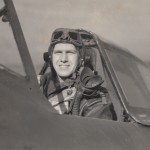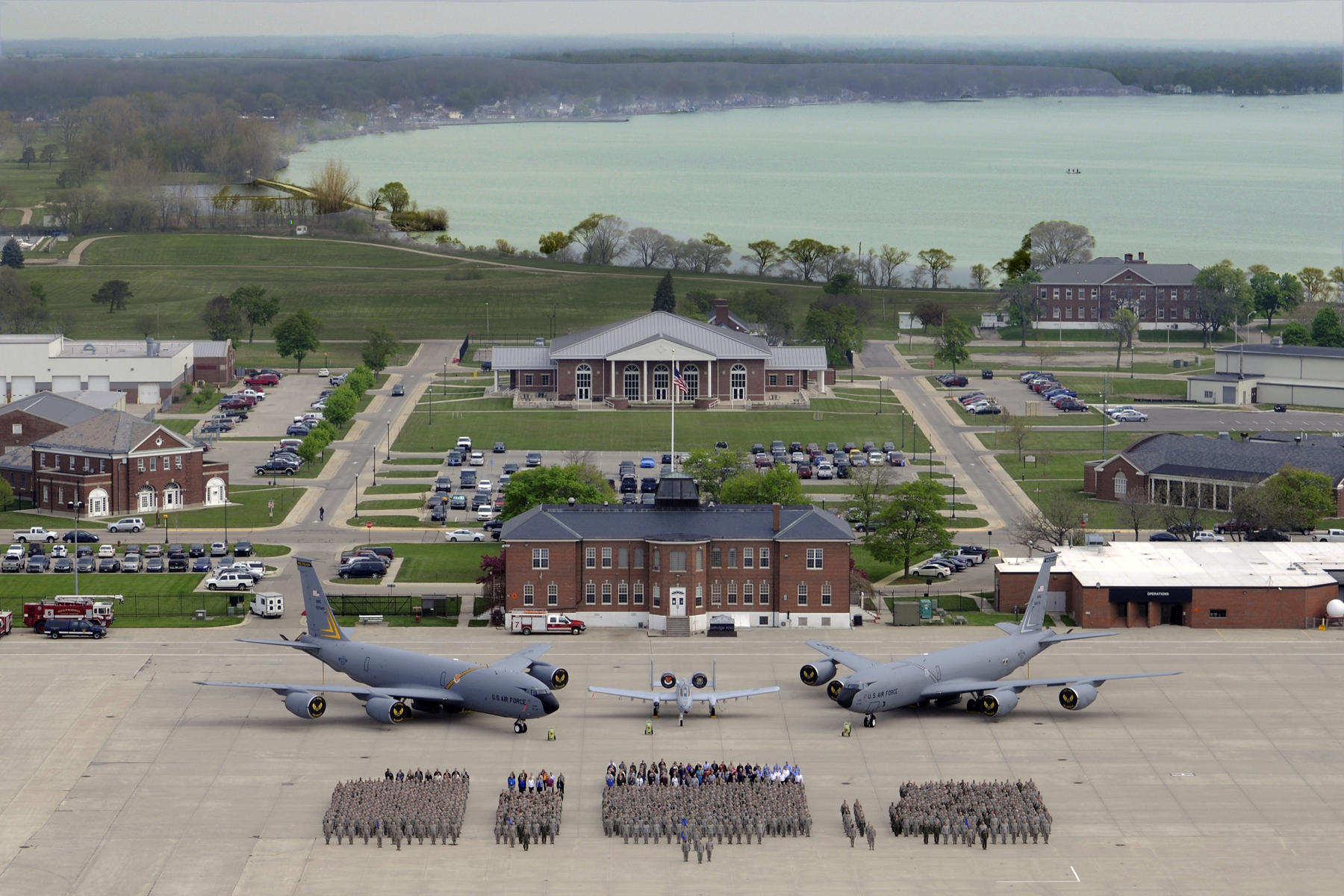The 127th Wing is stationed at Selfridge Air National Guard Base, located in Harrison Township, Michigan. Selfridge is one of the oldest continuously operating military airfields in the country, tracing its roots back to 1917 when the Michigan National Guard took possession of the Joy Aviation Field. The 127th Wing is the host unit at Selfridge and its 107th Fighter Squadron traces its roots back to the 107th Aero Squadron, formed on August 27, 1917. The 107th was disbanded after World War I and became the 107th Observation squadron on May 7, 1926. The 171st Air Refueling Squadron was initially the 374th Fighter Squadron during World War II in 1943. [5]
The 127th Wing
The 127th Wing was created in 1996 from the merging of the 127th Fighter Wing and the 191st Airlift Group and is broken into five different groups: the 127th Air Refueling Group files the KC-135T Stratotanker and includes the 171st Air Refueling Squadron, the 127th Operations Group flies the A-10C Thunderbolt II and includes the 107th Fighter Squadron, the 127th Maintenance Group supports the A-10 missions, the 127th Mission Support Group and the 127th Medical Group. [5]
The 171st Air Refueling Squadron

The 171st Air Refueling Squadron, part of the 127th Air Refueling Group, traces its history back to World War II. The 374th Fighter Squadron was created in 1943 to fly the P-47 Thunderbolt in the European Command. After the war, the squadron was re-designated as the 171st Fighter Squadron and assigned to the Michigan Air National Guard. In 1946, after the war was over, the 374th Fighter Squadron was redesignated as the 171st Fighter squadron and assigned to the Michigan Air National Guard. The unit picked up their nickname – the “Michigan Six-Pack” – while flying F-106 Delta Darts in the 1970s as a Fighter Interceptor squadron. Up until 1994, the unit flew various fighter aircraft, going through six different redesignations until being designated as the 171st Airlift Squadron. During the years between 1994 and 2008, the unit flew the C-130 Hercules cargo aircraft with their final deployment being in Afghanistan for the last six months of 2006. As of 2008, the unit has been known as the 171st Air Refueling Squadron and they fly and maintain the “T” variant of the Boeing KC-135 Stratotanker. [3]
The 171st ARS has seen several major deployments including being part of Operation Odyssey Dawn in Libya in 2011, being deployed in support of Pacific Air Command, supporting Air Mobility Command’s Tanker Airlift Control Center, and from 2011 to 2014, a series of ongoing mobilizations in support of Central Command. [3]
The KC-135 Stratotanker is a aerial refueling aircraft built by Boeing initially for refueling strategic bombers. The KC-135T flown by the 171st is a KC-135Q that was retrofitted with new CMF56 engines in the 1980s. These engine upgrades were a dramatic improvement over the original J-57 engine, with a nearly two times increase in thrust, is 25% more fuel efficient, and costs roughly 25% less to operate. The “Q” variant of the KC-135 is a modified version of the base KC-135A model specifically designed to carry the JP-7 fuel necessary for the SR-71 Blackbird. Having the KC-135T allows the 171st to carry two different types of fuel if necessary; JP-8 is used by the aircraft itself and either more JP-8 can be carried or a second fuel type can be carried. [7]
Primary Sources:
- The Bottisham Four. ca 1944. Image
- Lt. Glenn L. Fielding, 374th Fighter Squadron. ca 1944. Image
Secondary Sources:
- Schilling, D. (2004). Paving the way to success upgrading sel. Military Engineer,96(629), 65-66.
- U.S. Air Force Fact Sheet, 171st Air Refueling Squadron
- Cohen, D. M. (2001). The vital link: The tanker’s role in winning america’s wars.STAR, 39
- U.S. Air Force Fact Sheet, 127th Wing, Michigan Air National Guard
- “KC-135 Stratotanker”. boeing.com. Boeing. June 2011. Archived from the original on June 29, 2011

